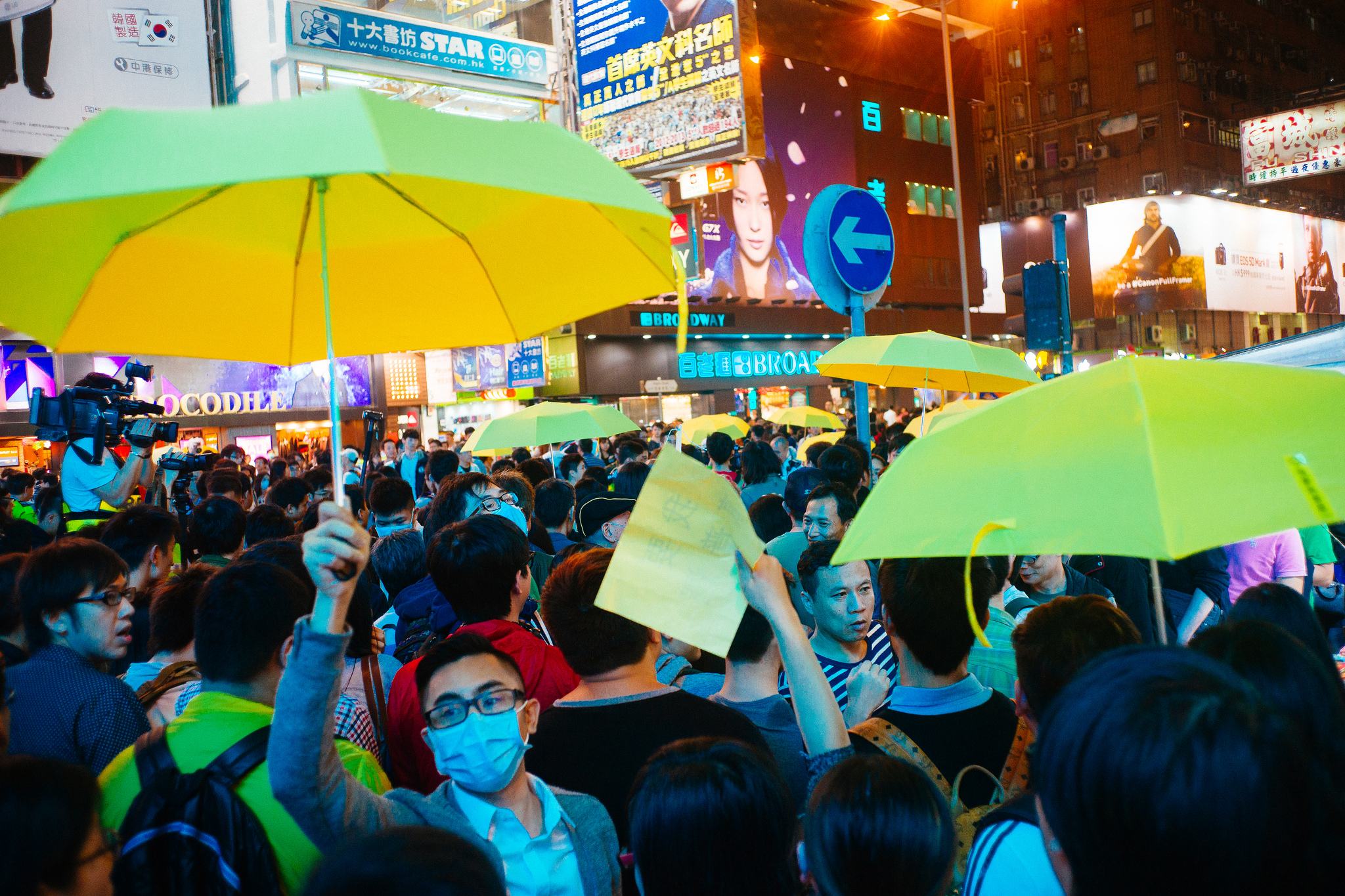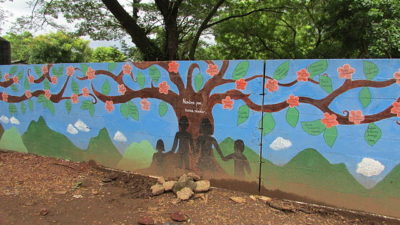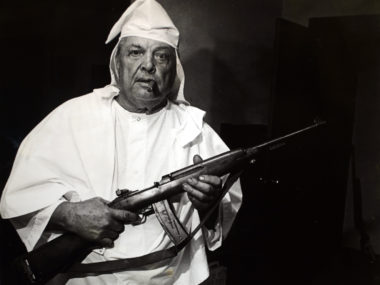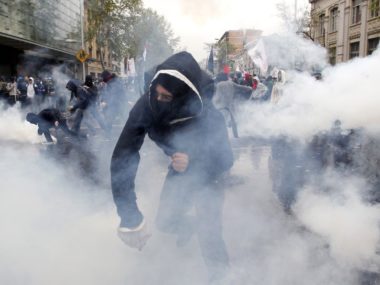Guest post by James Franklin

President Obama, Congressman John Lewis, and a wide range of political leaders recently commemorated the 50th anniversary of the infamous Bloody Sunday attack against protesters on the Edmund Pettus Bridge in Selma, Alabama. Lewis was one of many protesters severely beaten by Sheriff Jim Clark’s posse and Alabama State Troopers. This is perhaps the best known case in which harsh repression of protesters, far from stopping the protest campaign, backfired. Television networks showed footage of the peaceful protesters being beaten. Civil rights leaders called for another march on Tuesday, and hundreds converged on Selma, making the second march substantially larger than the first. The following Monday, President Johnson called on Congress to pass a sweeping voting rights bill, and soon after this a federal judge gave civil rights activists the green light for a march from Selma to Montgomery. David Garrow reports that “never before, in nine years time, had the movement received the breadth of national support , and the strength of federal endorsement, that this week had witnessed.” [1] While protesters in Selma persisted, there are a great many protests that are stopped by repression, such as the Tienanmen Square protests of 1989, or that fizzle out over time due to exhaustion.
A contemporary movement facing the challenge of persistence in the face of repression leaped into the public eye with the occupation of central Hong Kong on September 28, 2014. This occupation began in part as a response to the arrest of student leaders as they attempted to occupy Civic Square, and police use of tear gas as the occupation began only brought more to the streets. As the occupation continued and the number of participants swelled, it was labelled the “Umbrella Revolution” for the widespread use of umbrellas to protect against pepper spray (as well as the natural elements). Calling this movement a revolution is premature, but the protesters’ main demand–the right to have an open election for Hong Kong’s chief executive—would be revolutionary, and the occupation of central Hong Kong for over two months by tens of thousands of protesters has been called the greatest challenge to the Chinese government since Tiananmen Square in 1989. While the last participants in the occupation were removed by authorities in early December, they left posters reading “we’ll be back.” Indeed, smaller demonstrations have occurred since then. There are now reports that protesters are returning to the occupation camp to put pressure on Hong Kong’s Legislative Council to oppose the Chinese government’s plan to control the nomination process for Hong Kong’s chief executive.
Why did protesters in Selma, and so far in Hong Kong, persist in the face of repression, whereas repression stamped out the democracy movement in Tienanmen square? Certainly, the magnitude of repression in Tienanmen in 1989 was far greater than that visited upon Selma or Hong Kong, but if we want to identify the effect of repression on protest more broadly, prior social scientific research does not offer a clear answer. It has been hypothesized that repression tends to decrease protest, that it tends to increase protest, that median levels of repression tend to lead to the greatest (or lowest) levels of protest, and that repression decreases protest in the short-run but increases it in the long-run.
A problem with many previous studies is that they look at repression and protest over an entire country, so that the characteristics of individual protests cannot be considered. In a recent article, I examine over 1,000 contentious challenges (encompassing protests and violent attacks) in seven Latin American countries, observing how the government responded and whether the challengers organized a subsequent contentious challenge with similar demands within the following twelve months. If so, I considered the challengers to be persistent.[2] By focusing on persistence in this manner, I am able to consider the characteristics of individual protests.
Testing the above hypothesized effects of repression on protest, I found no consistent, reliable effects whatsoever. The persistence of protesters in my study has more to do with their organization, setting, and demands than with the actions of the government. Protests that have an organized group involved and that have more participants are more likely to persist, regardless of how authorities respond. Furthermore, protests that take place in authoritarian regimes and that seek regime change (including democratization) are more persistent.
This is a curious finding, since such protests should be especially likely to be met by governmental repression. I explain this finding with what I call the “filter theory” of the effect of repression on protest. I propose that the repression used by an authoritarian regime is likely to filter out opposition sympathizers who are not willing to face the very real risks involved in open resistance. This may delay resistance for a long time, but protest will often emerge eventually, and here it is likely to involve people who are fully aware of the risks of repression yet are committed enough to participate anyway. Thus, these participants are more persistent in the face of repression because they expect it.
Does my research offer any predictions for Hong Kong? While it is risky to make predictions about particular cases [3], Hong Kong does exhibit high levels of organization, as the protests involved organized groups including Occupy Central With Love and Peace, led by a law professor, a student movement called Scholarism, led by the 18-year-old Joshua Wong, and the Hong Kong Federation of Students. The occupation movement also showed strength in numbers, topping 100,000 participants. The movement also proposes democratic reforms to an authoritarian regime. Furthermore, the willingness to spend two months camped out in the elements, facing tear gas and fears of far worse, shows the commitment of participants. Joshua Wong, interviewed in a recent article, refers to his three arrests but adds “for a movement to be successful, someone needs to pay the price.” With a movement like this, my research suggests that it is likely to be persistent and that repression by Hong Kong authorities is unlikely to change that.
James Franklin is a Professor of Politics and Government at Ohio Wesleyan University.
Notes:
[1] David J. Garrow. 1986. Bearing the Cross: Martin Luther King, Jr., and the Southern Christian Leadership Conference. New York: Quill. Page 409. This section on Selma generally is based on Garrow’s book. [2] Franklin, James. 2015. “Persistent Challengers: Repression, Concessions, Challenger Strength, and Commitment in Latin America.” Mobilization: An International Quarterly 20(1): 61-80. [3] The research finds factors that appear to make persistence more or less likely across a large sample of protests, and may not predict a particular case. Furthermore, findings that apply to Latin America may not apply outside the region. However, the results seem to be consistent with general principles that would not be unique to one region.






